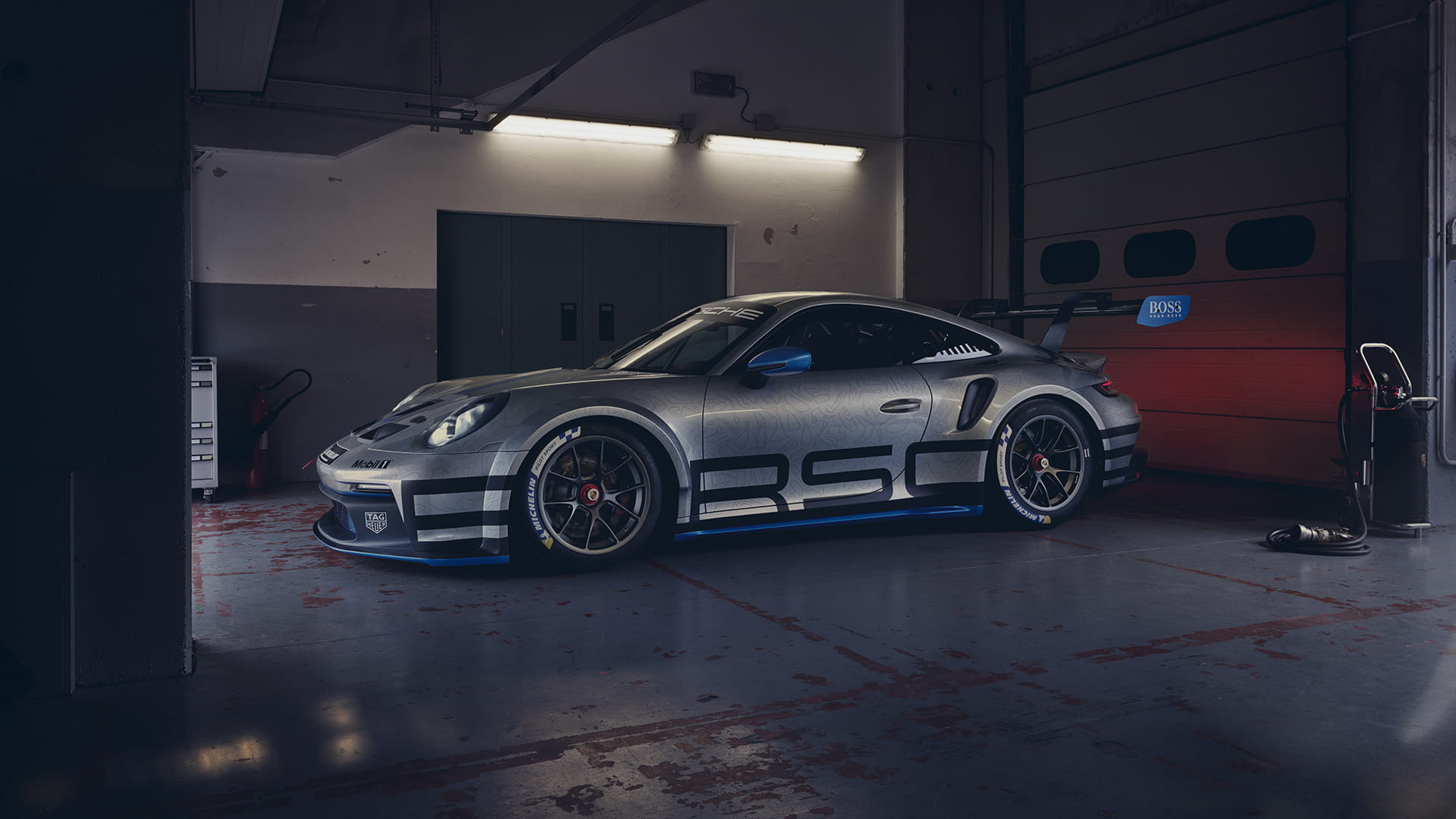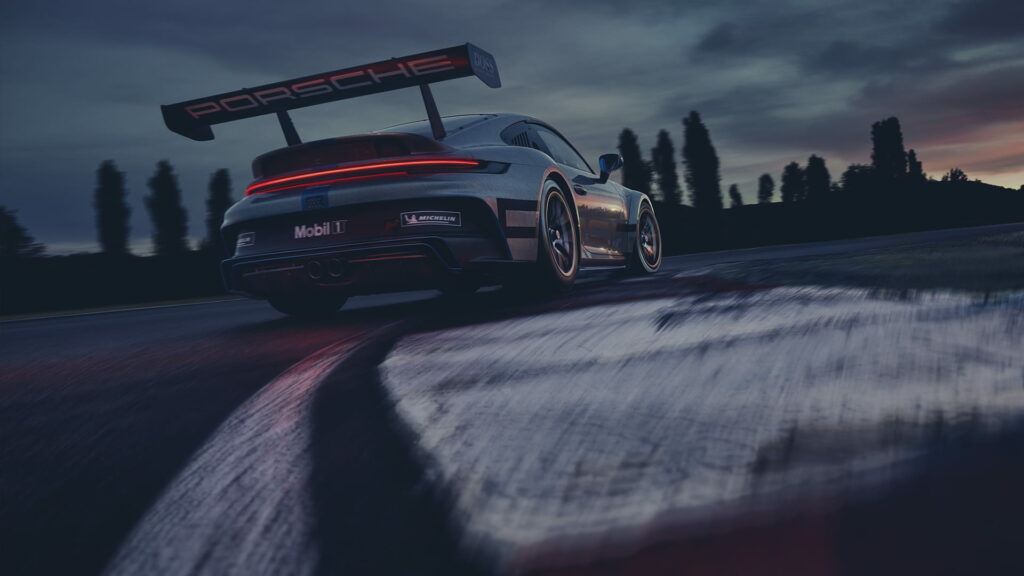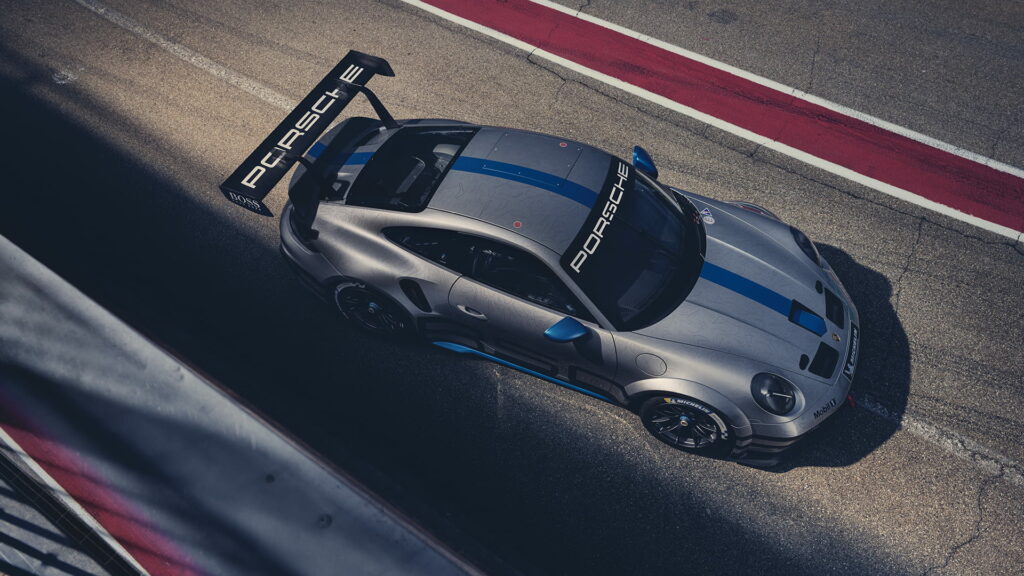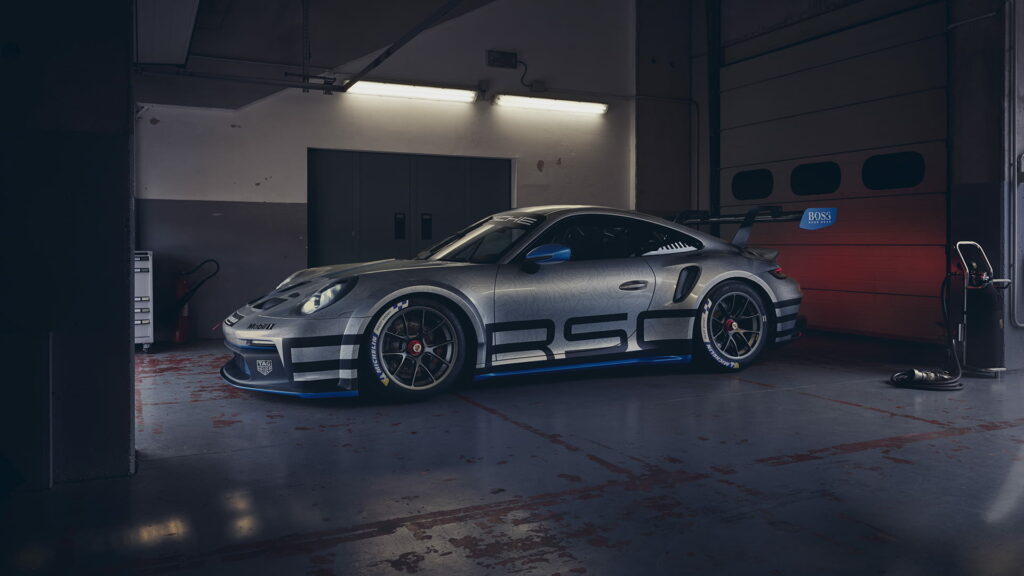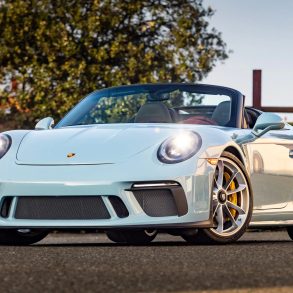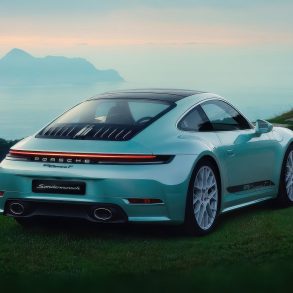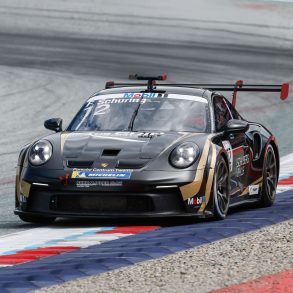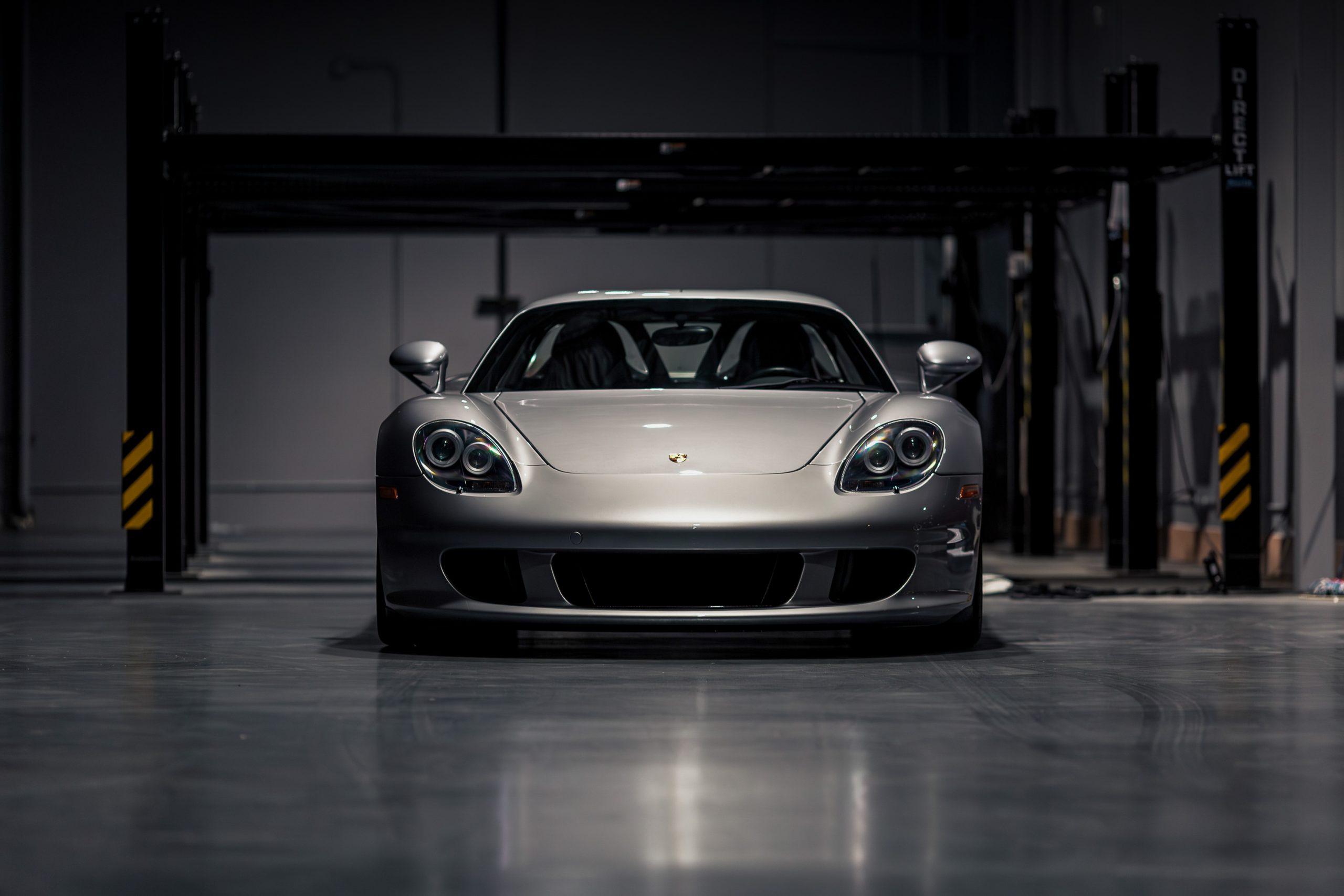2021 – 2025 Porsche 911 GT3 Cup (992) – Ultimate Guide
The comprehensively optimised one-make cup race car based on the current 992.12 generation of the 911 is one heck of a race car. The 911 Cup is used in the Porsche Mobil 1 Supercup and in selected Carrera Cup series. The 992.1 model, which debuted in the 2021 season, alone has been produced 1,130 times. The production of a Porsche 911 GT3 Cup of the 992.1 generation took just under eight hours.
The 992-generation Porsche 911 GT3 Cup is the backbone of Porsche’s global one-make ecosystem, a purpose-built race car that distills the 911’s road-car DNA into a harder, faster, more durable package for professional and aspiring pros alike. Debuting for the 2021 season, the 992.1 Cup ushered in meaningful gains in power, aero efficiency, and service life over the 991.2 car, and it became the spec machine for Porsche Mobil 1 Supercup and more than a dozen national and regional Carrera Cups worldwide.
Where It Fits vs. Road & GT3 R
Think of Porsche’s 911 race-car ladder this way:
- 911 GT3 (road car): track-capable road machine (502 hp U.S. rating) with double-wishbone front suspension—first for a road-going 911—and aero learned from the RSR.
- 911 GT3 Cup (this car): customer racing car for single-make series; more downforce via gooseneck wing and larger front lip, wider “Turbo-spec” body, slicks, and a durable NA 4.0-liter race engine. It is raw and quick, with fewer driver aids than a GT3-class car.
- 911 GT3 R (GT3-class): built for multi-make GT3 racing with more downforce and full driver aids; many drivers find it “easier” over a stint thanks to aero/ABS/TC tuning for BoP-regulated series.
Technical Highlights (992.1 Cup)
Engine & Driveline
- 4.0-liter, water-cooled naturally aspirated flat-six; 375 kW (510 hp) at 8,400 rpm, 470 Nm at 6,150 rpm; 8,750-rpm redline; dry-sump lubrication. Power is +25 hp vs. 991.2.
- Six-speed sequential dog-type gearbox with electronic shift barrel actuator.
Chassis & Body
- Aluminum-steel composite shell; Porsche flipped the steel/aluminum ratio vs. 991.2 to prioritize lower weight and repairability. Ready-to-race weight ~1,200 kg.
- First Cup car on the wide “Turbo-spec” body for a broader stance and wider tires.
- Double-wishbone front suspension, aligned philosophically with the 992 GT3 road car’s layout, sharpening front-end response.
Aero & Tires
- Top-mount (gooseneck) rear wing and enlarged front lip generate notably more downforce than 991.2, improving cornering speeds and turn-in.
- Series-spec Michelin slicks (widths vary by series rules).
Electronics & Aids
-
Customer-racing-tuned Bosch ECU; optional ABS and traction control (availability depends on series regulations).
Service Life & Operating Model
-
Engine: inspection after ~100 hours of track time; gearbox: minor inspection ~60 hours, major overhaul ~120 hours—a big reason teams love the 992.1 for cost control over a season. (Always confirm with your series/PMNA program; intervals may vary with duty cycles.)
Sustainability Note
-
Porsche publicized the Cup car’s ability to run on synthetic fuels—a tech path being developed in parallel with road-car R&D.
Performance Character
On track, the 992.1 Cup is a study in momentum and precision. The aero is real—but not GT3-class-level—so the car rewards trail-braking finesse, rotation on entry, and smooth platform control. Several testers have remarked that while the GT3 R can feel calmer on the limit thanks to higher downforce and stronger electronic aids, the Cup car is the purer, busier teacher—closer to the knife’s edge and hugely rewarding when you put it together.
Racing Story: 2021–2025
- Global Debut (2021). The 992-gen Cup’s first season launched in North America and Europe—world competition debut in Porsche Carrera Cup North America 2021—and it immediately became the worldwide spec for Carrera Cups and Porsche Mobil 1 Supercup.
- Supercup Integration. As the flagship one-make series on the Formula 1 undercard, Supercup fields identical 992.1 Cup cars, spotlighting driver talent across iconic circuits.
- National & Regional Dominance. From Germany to Asia to North America, the 992.1 Cup composed the grid for pro-am pyramids (Pro/Pro-Am/Am), producing deep car counts and fiercely contested sprint racing throughout 2021–2025. (Examples abound—title fights and champions vary by series and season.)
- The Transition on the Horizon. In mid-2025 Porsche confirmed that an updated Cup car based on the 992.2 GT3 is in development, aiming to replace 992.1s beginning with the 2026 season. Expect refinements to front-end aero, electronics, brakes, transmission, and engine; 992.1s will continue in club and regional use for years.
What Carries Over from the Road Car?
- Layout & Character. The NA 4.0-liter character and high revs are shared with the GT3 road car, but the Cup unit is a race build with motorsport calibration and ancillaries for durability under sprint-race abuse.
- Front Suspension Concept. The move to double-wishbone architecture appears in both road and Cup variants for sharper initial bite and stability.
- Aero Language. The top-mount rear wing (now also seen on the GT3 road car) is optimized for an unbroken pressure surface under the element; the Cup’s larger devices and full slicks take it further.
What’s Different vs. the 911 GT3 R?
- Aero & Aids: GT3 R runs in FIA GT3 with higher-downforce packages and full ABS/TC tuned for endurance—easier to extract stint pace; Cup has lower aero, optional aids (per series), and a rawer sprint focus.
- Tires & BoP: GT3 R competes in BoP-regulated series on control or mandated tires; Cup runs its own spec slick and identical car configuration across a one-make field.
Living with a 992.1 Cup (Team/Owner Notes)
Acquisition & Costing
-
New 992.1s were originally offered around the €225k / ~$270k mark before spares, transport, and running costs; well-kept used cars trade widely via specialists and auctions today (recent examples around $200k–$270k, specification and hours dependent). Pricing varies by region, history, and spares package.
Service Intervals
-
The 992.1’s 100-hour engine inspection and 60/120-hour gearbox inspection/overhaul targets are a key part of the business case for Carrera Cup teams—lower lifecycle costs vs. many GT3/GT4 programs. (Always align with Porsche Motorsport North America or your regional Porsche Motorsport org.)
Regulatory & Setup Landscape
-
Each Carrera Cup publishes technical regs that govern ballast, ride height, exhaust noise maps, and authorized parts; IMSA’s Porsche Carrera Cup North America tech regs are a good reference for the granularity teams work within.
Driver Aids & Learning Curve
-
Depending on your series, ABS/TC may be disabled or limited; that’s part of why Cup racing is such a driver-development crucible. Expect a steep, rewarding learning curve—especially in high-speed entries where aero is building but not dominant.
Key Specs (Factory Highlights)
- Engine: 4.0-liter NA flat-six, 510 hp @ 8,400 rpm, 470 Nm @ 6,150 rpm; 8,750-rpm redline; dry-sump.
- Transmission: 6-speed sequential dog-type with electronic actuator
- Aero: Gooseneck wing, larger front lip, increased downforce vs. 991.2.
- Body/Weight: Aluminum-steel composite; ~1,200 kg ready to race; wider Turbo-spec body.
- Electronics: Bosch MS 6.x family ECU; optional ABS/TC per series.
Series & Pathways
- Porsche Mobil 1 Supercup: The global pinnacle of Porsche one-make racing, run on Formula 1 weekends with stacked international grids—all in identical 992.1 Cup cars.
- Porsche Carrera Cups (Regional/National): North America, Germany, France, Benelux, Asia, Australia, and more. The car’s 2021 world-debut in Carrera Cup North America set the template for the current era.
Looking Ahead
As 992.2-based Cup cars come online for 2026, the 992.1’s legacy is secure: it modernized the platform with the Turbo-width stance, gooseneck aero, and durability that enabled massive global grids and tight cost control. Expect 992.1s to continue thriving in national series (where eligible), club competition, and private track programs for years to come.
What We Said At Launch
The Porsche Mobil 1 Supercup features the Porsche 911 GT3 Cup, the world’s best-selling race car. For this season, it’s the new generation. The new Porsche 911 GT3 Cup is the first race car based on the current 911 model series 992. Like everything at Porsche Motorsport, the seventh race car generation is equally as committed to sporting success – it’s a tradition after all. Since 1990, Porsche has built and sold more than 4,250 copies of the world-renowned cup car.
Broad and brutish, the new bolide stands on the tarmac, every inch a thoroughbred race car. This is something also highlighted by the significant changes compared to the 2017 version (991.2): 510 hp, optimised intake manifold, electronic gearshift and power steering, fully digital cockpit, larger rear wing, and a double-wishbone front axle – which means the toe at the front is wider for the first time at 1,920 mm compared to the rear axle (1,902 mm). How a one-make cup race car performs is the foundation for all the exciting races to come. The new 911 GT3 Cup is taking on a great legacy. And it has already proven itself!
Faster than the predecessor.
The new Porsche 911 GT3 Cup produces more downforce with the gooseneck rear wing and a larger front lip. The result: higher cornering speeds and more direct turn-in for faster lap times, especially on winding circuits. A giant leap from the 991 to the 992!
It’s not just the racing teams and drivers who are enthusiastic about this new sporting machinery. Porsche one-make cup fans can also look forward to closer title battles — especially in the 2021 season, when all participants will be busy gathering new data from the race car. Porsche Supercup teams chasing points in the national Porsche Carrera Cups in Germany, France and Benelux might have a slight advantage though. The new 911 GT3 Cup is also used here. Moreover, the car premieres at the Porsche Carrera Cup Asia and the recently established Porsche Carrera Cup North America.
The extra power was the first thing I noticed when I left the pit lane. It’s sensational!
Teamwork in the interest of fans and the environment.
There’s no denying it’s a prestigious project when the world’s best-selling racing car comes up for a model change. The development team not only has to weigh up the limits of what is technically possible, but also incorporate input from racing teams across the globe. In addition to top performance and innovations, the teams demand reliability and economic efficiency. Racing, for all its emotions, is a business.
But there’s another element that is fast becoming a key focus in vehicle development in times of advancing global warming: sustainability. The drive unit of the new Porsche 911 GT3 Cup, for example, is designed to run on synthetic fuels – allowing a significant reduction in CO2 emissions when racing. In fact, from mid-2022, the Porsche Mobil 1 Supercup is preparing to run on an innovative, climate-neutral eFuel – generating important insights into climate-friendly combustion engines for Porsche’s road cars.
Digital cockpit with improved ergonomics. Ease of operation and maintenance is a decisive factor for racing teams when it comes to purchasing a new race car. And here the new digital cockpit represents a quantum leap. It is far more driver-oriented – allowing direct access to multiple functionalities via the newly designed steering wheel. A central interface also simplifies data and error analysis.


